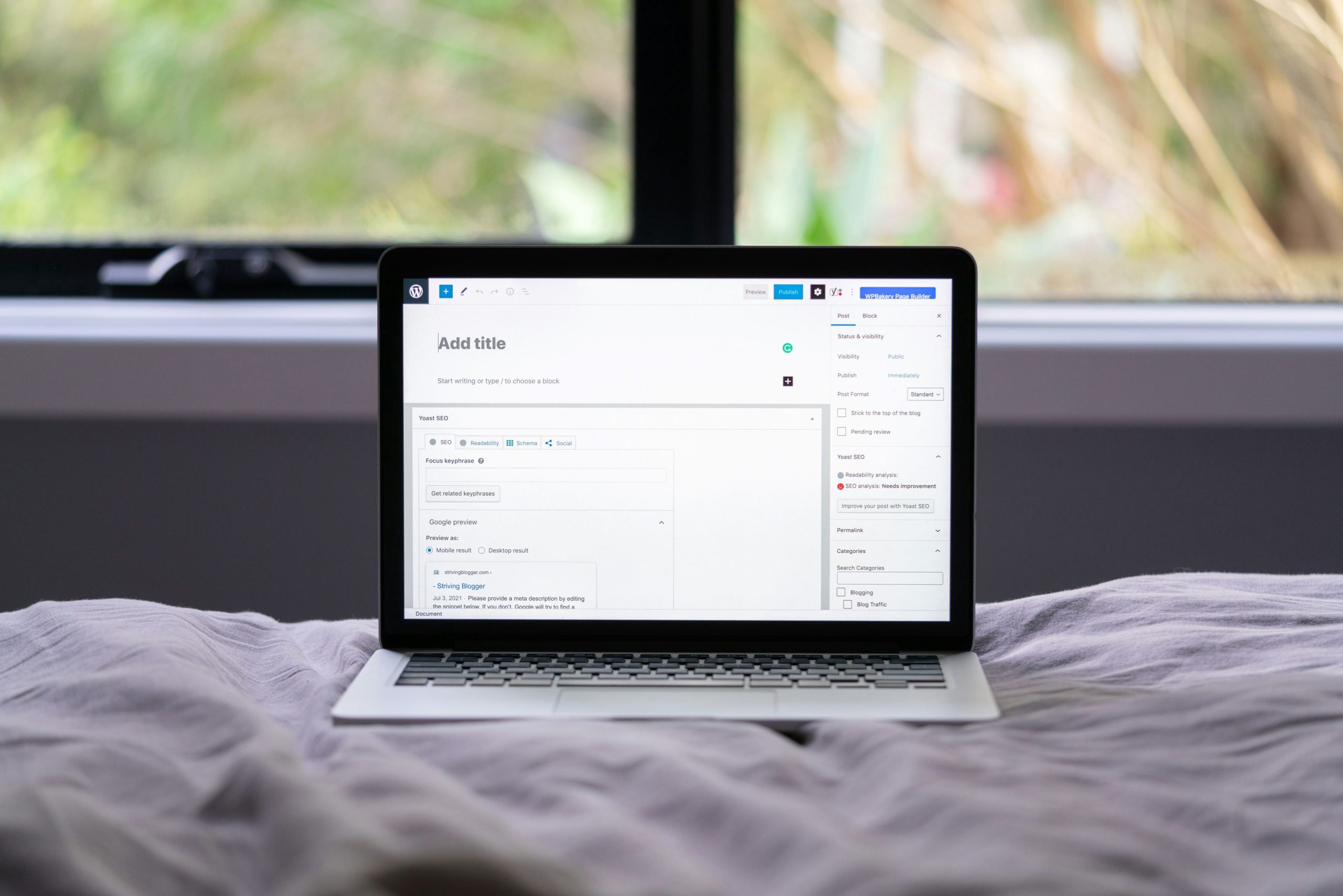In the fast-paced digital landscape, every second counts, especially when it comes to capturing leads and engaging with your audience. Imagine the thrill of receiving an immediate notification as soon as someone submits a form on your WordPress site—like a bell ringing to announce a new opportunity right at your fingertips. Whether you’re running a bustling e-commerce store, managing client inquiries, or building connections through newsletters, timely notifications can be the key to transforming potential leads into loyal customers.
But how do you ensure that you’re always in the loop? In this article, we’ll explore effective methods and tools that allow you to set up instant alerts for form submissions on your WordPress site. From leveraging built-in features to utilizing powerful plugins and integrations, we’ll guide you step-by-step in mastering this essential aspect of website management. Stay connected with your visitors like never before and watch your engagement levels soar!
Importance of Form Submission Notifications
Form submission notifications are more than just a convenience; they serve as the critical lifeline in managing timely responses and fostering communication. When you receive immediate alerts about new submissions, it allows you to engage with potential clients or customers while their interest is at its peak. This swift feedback loop can significantly enhance customer satisfaction, ensuring that inquiries don’t languish in the digital ether.
Moreover, timely form notifications empower businesses to track trends and gather valuable data insights. By analyzing the frequency and nature of submissions over time, you can identify peak periods for engagement, optimize marketing strategies, and fine-tune your offerings based on real user needs. In a world where attention spans are fleeting, establishing efficient channels for notification ensures that you’re always ready to capitalize on opportunities as they arise—turning mere interactions into lasting relationships.

Choosing the Right Form Plugin
When it comes to selecting the right form plugin for your WordPress site, the choices can be overwhelming. Instead of just opting for the most popular option, consider what specific features align with your goals. Does your project require advanced conditional logic? Some plugins enable you to tailor follow-up questions based on user responses, creating a dynamic experience that feels personalized and engaging. On the other hand, if simplicity and speed are priorities, look for lightweight plugins that fast-track form creation without unnecessary bells and whistles.
Another critical factor is integration ability; assess how well a plugin connects with your existing tools like email marketing platforms or customer relationship management (CRM) systems. A seamless integration can streamline your notification process by automating lead capturing directly into a centralized database. Additionally, ensure that any chosen plugin takes security seriously by offering features such as CAPTCHA protection or anti-spam measures; this not only protects you but also instills confidence in your users as they submit information through forms on your site. Ultimately, the right form plugin does more than collect data; it enhances user experience while ensuring reliable notifications that empower you to engage effectively with every submission.
Setting Up Email Notifications
When setting up email notifications for form submissions in WordPress, consider the nuances of personalization. Instead of relying on generic templates, customize your notification messages to reflect your brand’s voice and provide immediate value. For instance, acknowledge the specific action taken by the user, such as an inquiry about a service or product. This not only enhances user experience but also fosters a sense of engagement right from the start.
Another effective strategy is to utilize conditional logic within your forms. By doing so, you can tailor notifications based on user responses—ensuring that both you and the submitter receive relevant information at every turn. Imagine receiving alerts only when certain criteria are met; it streamlines your workflow while making sure that no important lead falls through the cracks. Furthermore, integrating third-party tools like Zapier can automate these notifications across platforms, adding an extra layer of efficiency to your outreach efforts and ensuring timely follow-ups without manual intervention.

Customizing Notification Messages
Customizing notification messages can transform a mundane email into an engaging touchpoint that reinforces your brand’s voice. Instead of relying on generic templates, consider tailoring your notifications to reflect your personality and enhance user experience. By incorporating personal greetings and using dynamic content—such as the submitter’s name or their specific interests—you create a sense of connection that goes beyond transactional interactions. This small tweak not only increases engagement but also fosters loyalty by making users feel valued.
Moreover, don’t underestimate the power of aesthetics in your notification messages. Experiment with formatting techniques, such as bolding important information or adding subtle colors that align with your branding, to guide recipients’ attention effectively. Including clear calls-to-action (CTAs) encourages users to take next steps—whether it’s visiting a thank-you page or exploring additional resources—and enhances interaction flow after form submission. Remember, these notifications aren’t just functional; they are an extension of your brand narrative and should elicit an emotional response that invites further engagement long after the initial form is completed.
Testing Your Notification System
Once you’ve set up your notification system, rigorous testing is crucial to ensure it operates seamlessly under real-world conditions. Begin by simulating various submission scenarios, such as valid entries, partial fills, and erroneous inputs. This approach not only helps validate your system’s responsiveness but also uncovers potential flaws in the process that could lead to missed submissions or lost communications.
Consider involving a few trusted individuals or colleagues to assist with this testing phase. Diverse perspectives can reveal insights that you might overlook on your own. Encourage them to interact with the form as a fresh user would; their feedback could highlight usability issues or confusion points within the submission process itself—after all, user experience is just as critical as functionality when striving for effective notifications. Don’t forget to test different email clients too; notifications should render correctly across platforms like Gmail, Outlook, and mobile applications to ensure your message reaches every intended recipient without distortion or delay.

Troubleshooting Common Issues
When troubleshooting notification issues in WordPress forms, start by checking your email settings. Many users overlook the importance of properly configuring their WordPress site to send emails effectively. Ensure that your hosting provider supports PHP mail functions; if not, consider installing an SMTP plugin like WP Mail SMTP or PHPMailer to ensure reliable delivery. This transformation can divert notifications back from spam folders and enhance sending capabilities, ensuring you don’t miss any critical submissions.
Next, verify the form plugin’s configurations. Different plugins have specific settings for managing notifications—double-check that recipient emails are entered correctly and that notifications are enabled for all relevant submission actions. Additionally, consider testing with alternate email addresses or using dedicated service providers like SendGrid or Mailgun for better reliability and performance statistics. Remember that server-level changes can impact functionality as well; firewalls might inadvertently block outgoing messages from certain plugins, leading to silence when you expected an alert. Engaging in these steps not only streamlines your notification process but also empowers you with better control and understanding of how submissions impact your workflow in real-time.
Conclusion: Streamlining Your Form Management Process
In the fast-paced digital landscape, streamlining your form management process is not just a convenience; it’s a strategic advantage. By employing automated notifications and leveraging powerful WordPress plugins, you can significantly reduce the time spent sifting through manual entries. This optimization allows you to focus on higher-level tasks, such as analyzing responses for actionable insights or enhancing user engagement based on feedback received.
Moreover, creating a cohesive system that integrates seamlessly with other platforms—like CRM tools and email marketing services—can elevate your workflow even further. Consider adopting multi-tiered notification systems to ensure critical submissions receive immediate attention while less urgent ones are batched for regular review. This staged approach not only keeps you organized but also clarifies priorities within your operational strategy, allowing your team to respond proactively rather than reactively. Embracing these methods will empower you to turn form data into a dynamic asset that drives informed decision-making and ultimately enhances the overall experience for both users and administrators alike.




